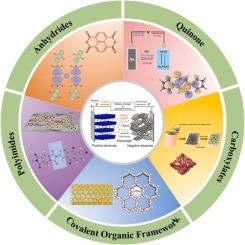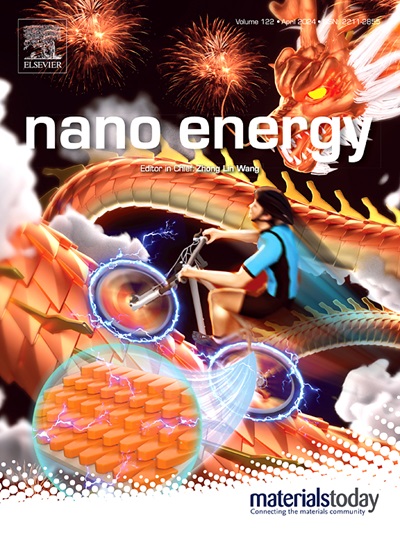有机羰基化合物作为钠离子电池电极材料的研究进展
IF 16.8
1区 材料科学
Q1 CHEMISTRY, PHYSICAL
引用次数: 0
摘要
有机电极材料具有容量大、资源丰富、成本低、结构可控等优点,有望成为二次电池的重要材料。目前,有机电极材料已广泛应用于各种金属离子电池体系中,但有机电极材料的大规模商业化应用仍面临诸多挑战,如氧化还原电位低、固有电导率低、在有机电解中的溶解度等。为了解决有机电极材料的技术瓶颈,科学家们将注意力集中在调节有机分子结构和优化实验条件上。综述了近年来有机羰基化合物的研究进展,介绍了有机羰基化合物的氧化还原机理和基本性质。最后总结了有机羰基化合物目前面临的挑战和可能的发展方向,为今后有机电极材料的设计和研究提供参考。本文章由计算机程序翻译,如有差异,请以英文原文为准。

Progress of organic carbonyl compounds as electrode materials for sodium−ion batteries
Organic electrode materials are expected to be promising candidates for secondary batteries due to their high capacity, abundant resources, low cost, and structural controllability. Currently, organic electrode materials have been applied in various metal-ion battery systems, but their commercial application is still hindered by a number of issues, including low redox potential, low intrinsic conductivity, and solubility in organic electrolysis. To address the technological bottleneck of organic electrode materials, the modification of organic molecular structure and the improvement of experimental conditions have received considerable attention. This paper reviews the recent research progress, and introduces the redox mechanism and basic properties of organic carbonyl compounds. Finally, it summarizes the current challenges and possible development directions of organic carbonyl compounds, providing a reference for the design and optimization of organic electrode materials in the future.
求助全文
通过发布文献求助,成功后即可免费获取论文全文。
去求助
来源期刊

Nano Energy
CHEMISTRY, PHYSICAL-NANOSCIENCE & NANOTECHNOLOGY
CiteScore
30.30
自引率
7.40%
发文量
1207
审稿时长
23 days
期刊介绍:
Nano Energy is a multidisciplinary, rapid-publication forum of original peer-reviewed contributions on the science and engineering of nanomaterials and nanodevices used in all forms of energy harvesting, conversion, storage, utilization and policy. Through its mixture of articles, reviews, communications, research news, and information on key developments, Nano Energy provides a comprehensive coverage of this exciting and dynamic field which joins nanoscience and nanotechnology with energy science. The journal is relevant to all those who are interested in nanomaterials solutions to the energy problem.
Nano Energy publishes original experimental and theoretical research on all aspects of energy-related research which utilizes nanomaterials and nanotechnology. Manuscripts of four types are considered: review articles which inform readers of the latest research and advances in energy science; rapid communications which feature exciting research breakthroughs in the field; full-length articles which report comprehensive research developments; and news and opinions which comment on topical issues or express views on the developments in related fields.
 求助内容:
求助内容: 应助结果提醒方式:
应助结果提醒方式:


